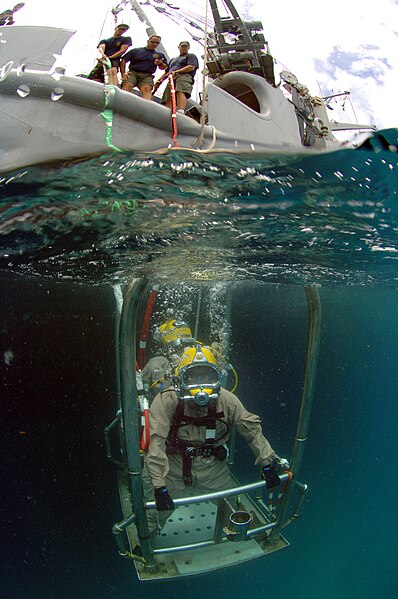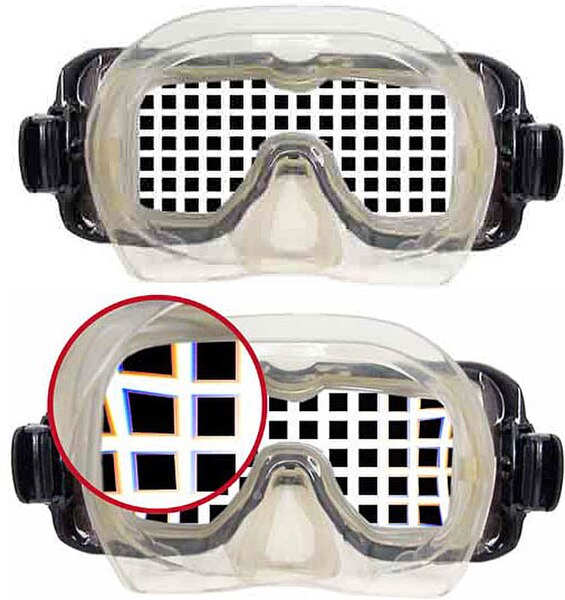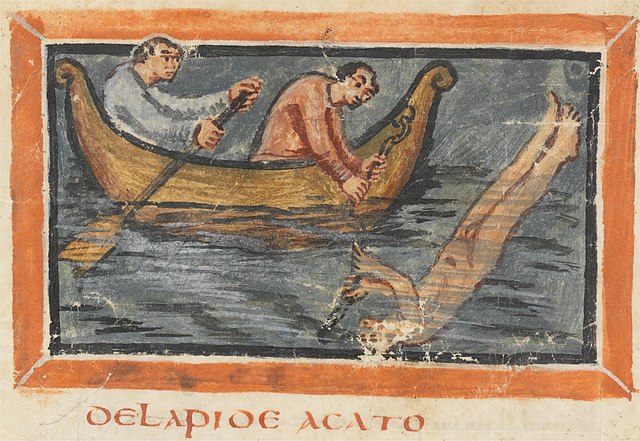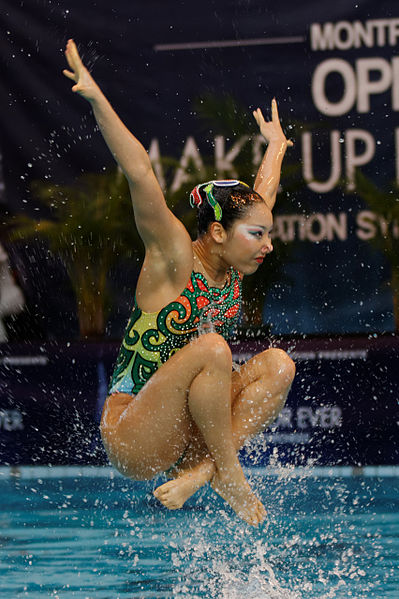Underwater diving, as a human activity, is the practice of descending below the water's surface to interact with the environment. It is also often referred to as diving, an ambiguous term with several possible meanings, depending on context.
Immersion in water and exposure to high ambient pressure have physiological effects that limit the depths and duration possible in ambient pressure diving. Humans are not physiologically and anatomically well-adapted to the environmental conditions of diving, and various equipment has been developed to extend the depth and duration of human dives, and allow different types of work to be done.
Surface-supplied divers riding a stage to the underwater workplace
Mild barotrauma to a diver caused by mask squeeze
Views through a flat mask, above and below water
Recreational breath-hold divers in basic equipment with floats and catch bags suitable for collecting lobster or shellfish
Freediving, free-diving, free diving, breath-hold diving, or skin diving, is a mode of underwater diving that relies on breath-holding until resurfacing rather than the use of breathing apparatus such as scuba gear.
9th century illustration of a pearl diver
A member of the Japanese team is thrown up in the air by other members under the water during the team's free routine at the 2013 French Open.
Two players compete for the puck in underwater hockey
US Navy Students playing underwater football








